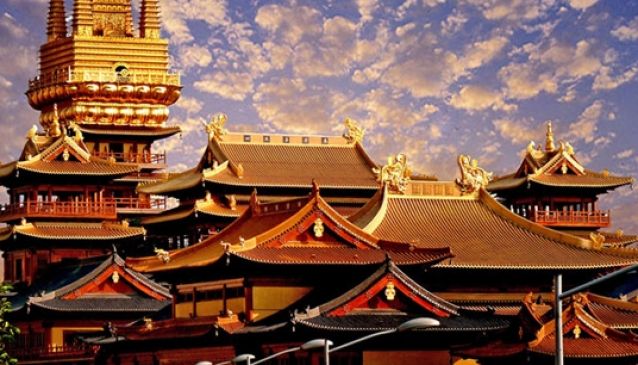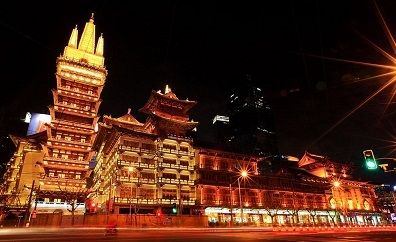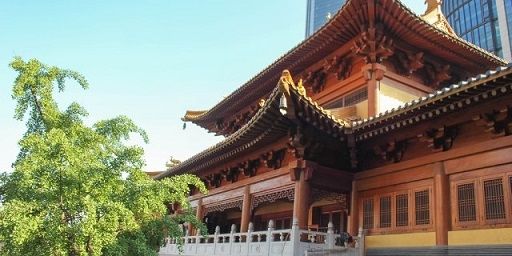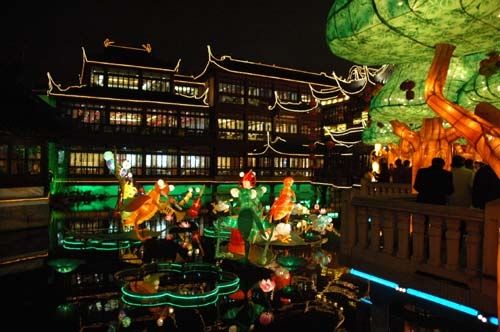a temple in the flourishing downtown area of Shanghai

Jing'an Temple is one of the most famous temples in Shanghai which is located at West Nanjing Road, the flourishing downtown area of Shanghai.
The temple has a history of more than 780 years. First built in the Three Kingdoms Period (220-280), it was named Hudu Chongyuan Temple. In the Southern Song Dynasty (1127-1279), the temple moved to the present location from the bank of Wusong River and became a busy and crowded place until 1908; the first tramcar was built as Jing'an Temple for its starting station. Later, a famous calligrapher renamed the temple as Jing'an Temple in 1945 and is still named as such today. Unfortunately, the temple was burnt down to ruins in 1972. However, the reconstruction began after 1984, so the Hall of Heavenly Kings and the Three-Sage Hall were repaired in succession. In 1990, Jing'an Temple was finally opened to the public.

There were eight scenes in the former Jing'an Temple that previously enjoyed great popularity. Most of them are extinct but the Estavel (Yong Quan) which was in front of Jing'an Temple was excavated in May 5th, 2009. The spring water gushed out day and night, so people called it 'boil well'. It was regarded as the 'Sixth Spring under Heaven'. After reconstruction, the spring was relocated at the crossing of Huashan Road and West Nanjing Road, and regained its former charm.

There are three main halls in the temple: The Mahavira Hall, the Hall of Heavenly Kings and the ThreeSage Hall. In Mahavira Hall, the biggest pure jade portrait of Sakyamuni in Mainland China is placed here. The jade Buddha has a height of 3.78 meters (about 12 feet), a weight of 2.6 meters (about 9 feet) and a weight of 11,000 kilograms. It was so big that the wall was torn down when it was moved into the hall. With a kind and tranquil facial expression, the e Buddha radiates venerability and auspiciousness.

Jing'an Temple is a good place to escape the hustle and bustle of crowds in downtown Shanghai. In the meantime, you can enjoy the marvellous painting and calligraphy by Yangzhou's Eight Eccentric Painters in the Exhibition Hall of Buddhist Relics. An important display of this temple is the bronze bell which was made in the Ming Dynasy (1368-1644).